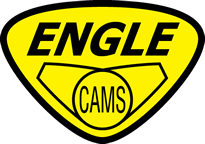Slow cranking 68 Beetle
My 68 Beetle seems to crank slow at times and at other times faster. I have replaced the stater but the condition presists. What could be the problem I need to look into?
Hi Adrian,
Thanks for your question. This intermittent problem can be caused by many things. I suggest to start with the basics. Have your battery fully charged and have it load tested at a shop. Second, clean all the terminals to confirm that you are making good connections, not just at the battery, but also where the ground cable connects to the floor pan. Also, factory engine and transmission mounts are rubber, therefore, you need to make sure that you have a ground strap from the transmission nose cone to the floor pan. This is common to be left off when replacing the nose cone mount or transmission. Once all of this is confirmed and your slow cranking problem still presists, you are ready to move on to the next steps.
Now, use a voltage meter to see what your total battery voltage is at rest. Once you have recorded this information, go to the small wire on the starter solenoid and disconnect it. Make sure to protect the wire from touching any metal where it could ground out in the process of this test. With the wire lead that comes from the ignition switch removed, have the helper turn the key to the start position. and measure the voltage at the wire lead. Do this several times to see if you get any fluctuation in the voltage reading. The reading should be the same as your battery voltage. If the voltage is less, then you have a problem within the start system, IE, ignition switch or connections. If the voltage reads the same, then this points to the starter.
Lastly, there is a small bushing in the bell housing of the transmission that supports the Bendix shaft. If this bushing is worn, it allows the shaft to move to the side causing the starter armature to drag in the starter internally. To fix this problem you do not need to pull the motor. Buy the replacement bushing, find a bottoming tap the correct size (using a pointed tap can damage the engine case!). Use the tap to tread into the bushing, as it bottoms out on the back side of the engine case keep tuning the tap and it will draw or pull the old bushing out of the transmission bell housing!! To install the new bushing, find a 3/8 drive socket that is the correct diameter and an extension long enough to allow you to safely tap in the bushing.
One more thing – just because you purchased a replacement starter does’t completely eliminate the possibility that it is still the starter – anything made by human hands can still fail.
I hope all this will help eliminate this problem in your car, Andy
Starter bushing part# 113301155
